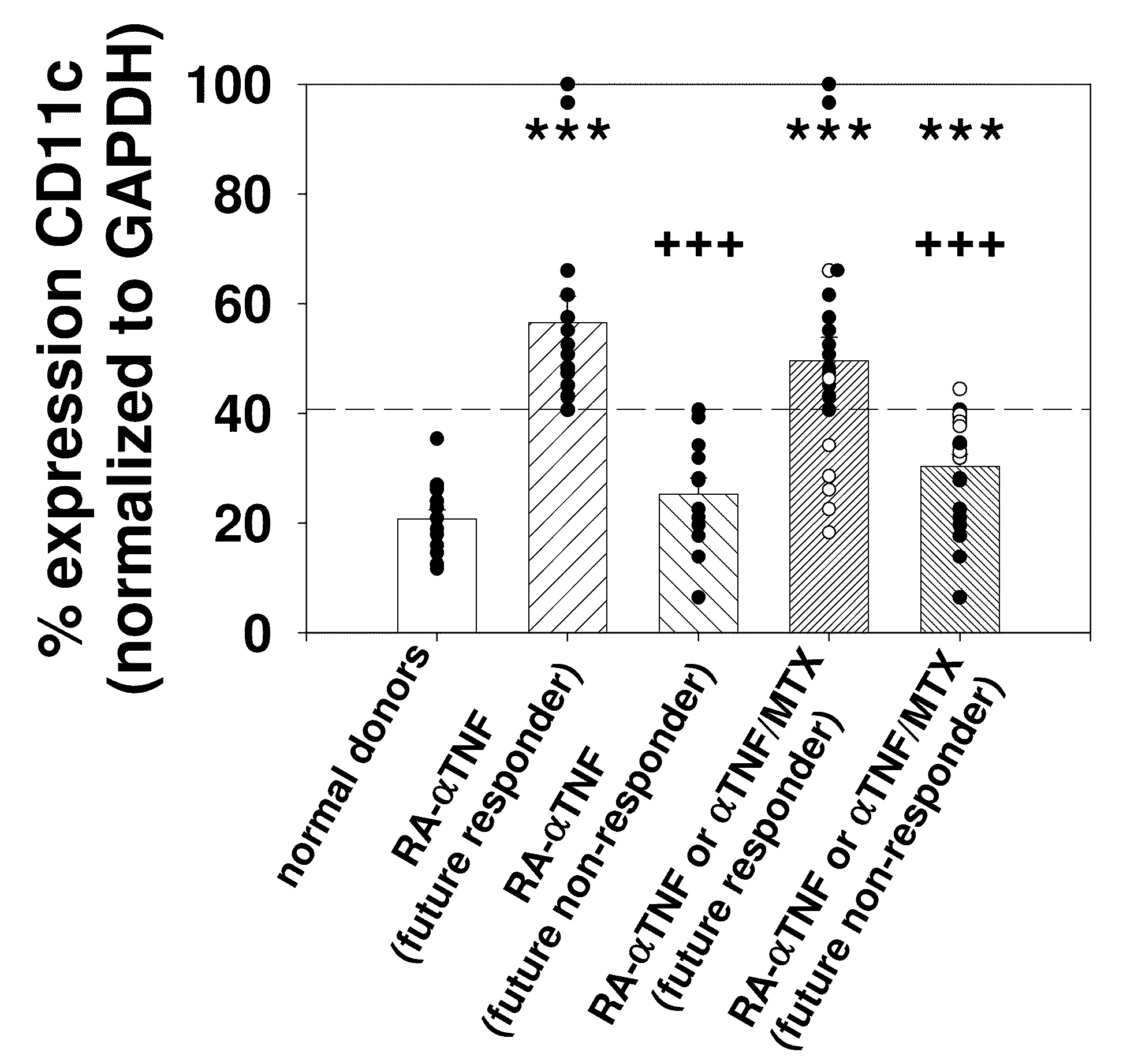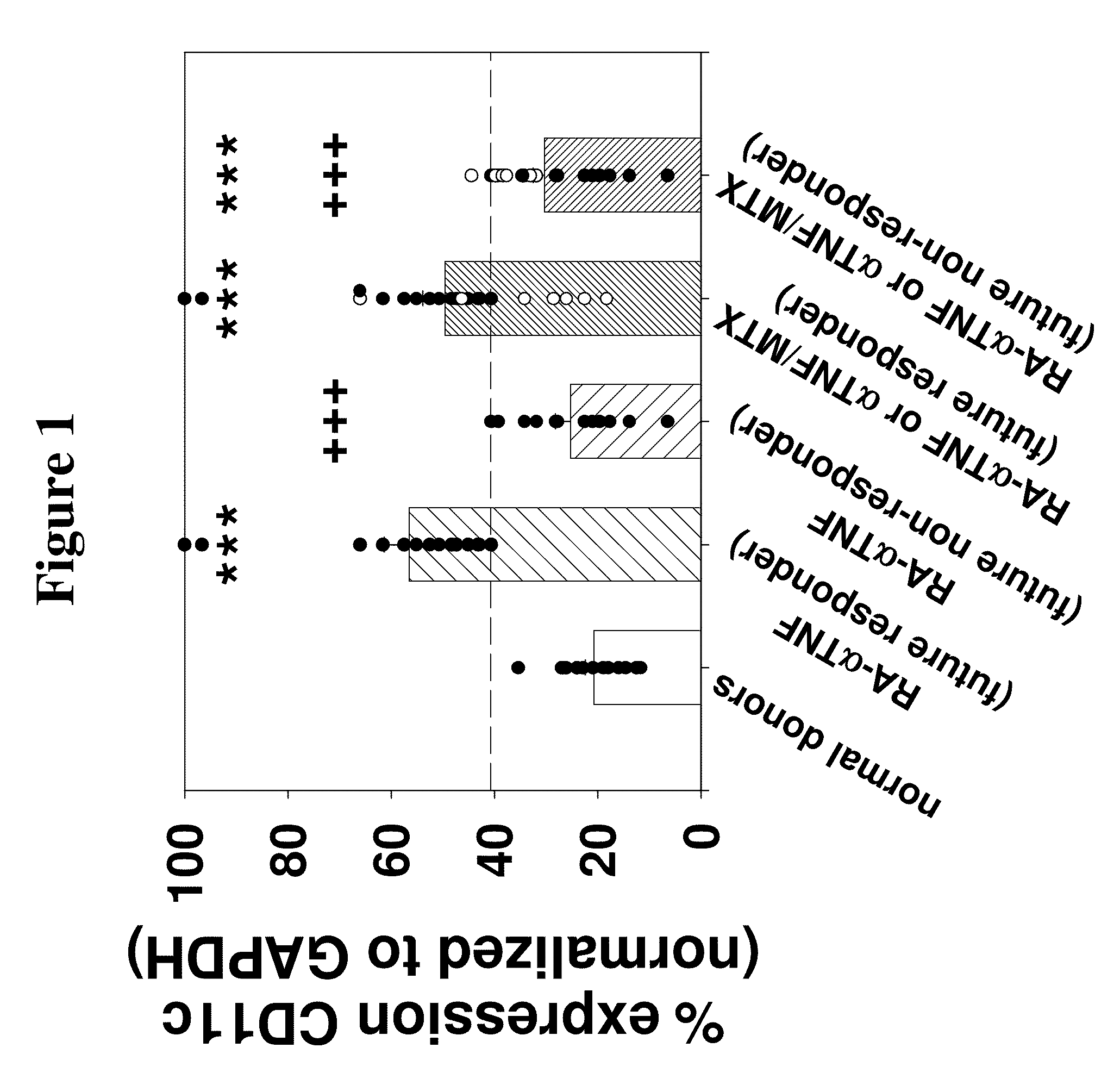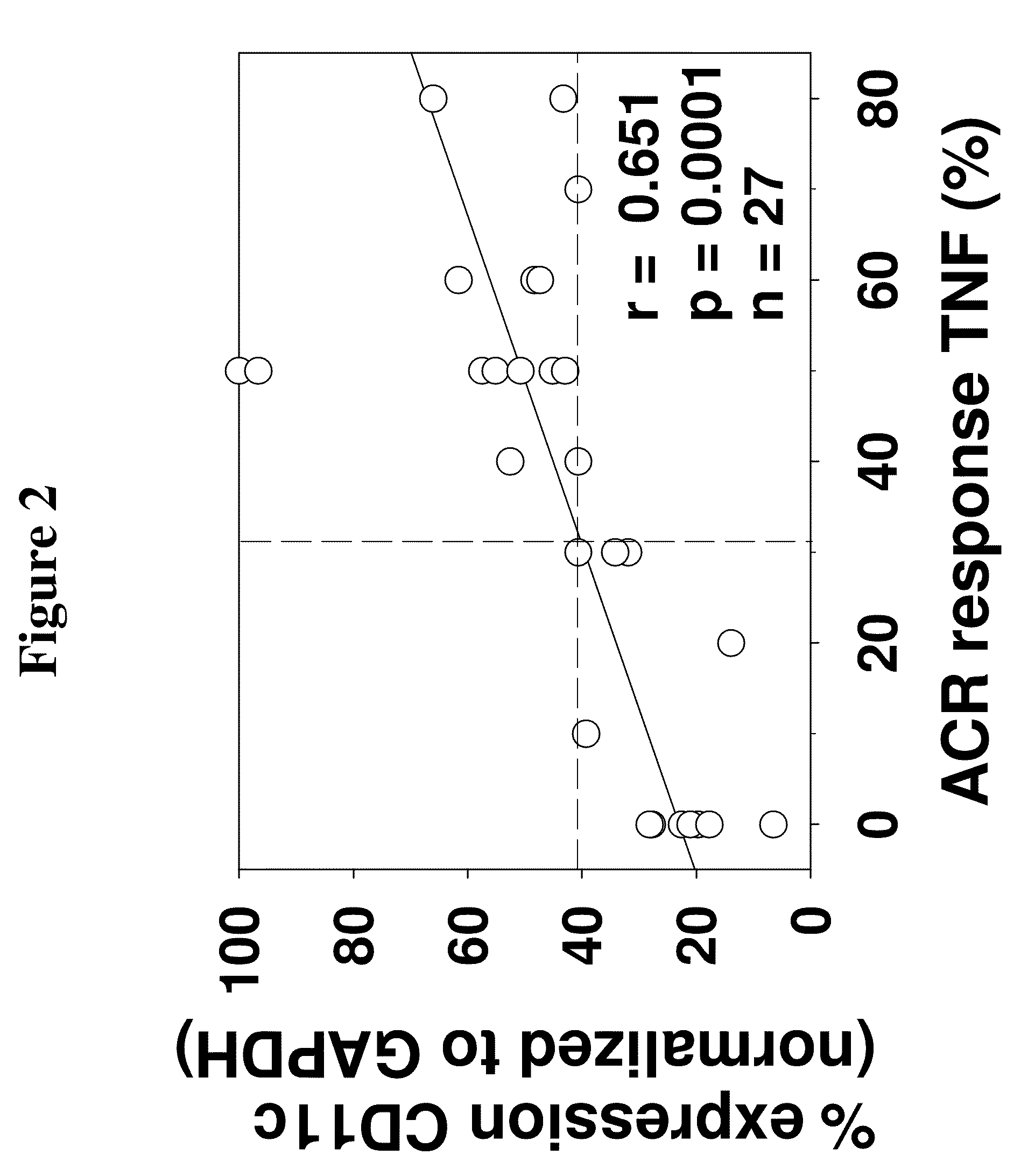BIOMARKERS PREDICTIVE OF THE RESPONSIVENESS TO TNFalpha INHIBITORS IN AUTOIMMUNE DISORDERS
a technology of autoimmune disorders and biomarkers, which is applied in the field of biomarkers predictive of the responsiveness of autoimmune disorders to tnfalpha inhibitors, can solve the problems of frequent redness, swelling, pain and tenderness of joints, and joint destruction and functional disability, and achieves significant and widespread medical problems such as autoimmune disorders
- Summary
- Abstract
- Description
- Claims
- Application Information
AI Technical Summary
Benefits of technology
Problems solved by technology
Method used
Image
Examples
example 1
Materials and Methodologies
[0165]In this example, the materials and methodologies used in the subsequent Examples are described.
Patients
[0166]Purified monocytes (MO) derived from a total of 84 RA patients were used. The clinical data for the RA patients, pre- and post-anti-TNFα treatment, is summarized in Table 1. All patients fulfilled the revised American College of Rheumatology (ACR) criteria (Arnett, F. C. et al. (1988) Arthritis Rheum. 31:315-324). Patients were defined as responders (≧continuous ACR score 40) or non-responders (≦continuous ACR score 30) to anti-TNFα monotherapy, MTX monotherapy or combination therapy. In order to account for a gradual transition from clinical responders to non-responders to therapy, a continuous ACR response evaluation was performed by applying the ACR criteria, but by defining 10% response steps instead of the usual 20, 50, and 70% steps. This was also done to allow more detailed analyses of the correlation between the ACR response and the mR...
example 2
Clinical and Laboratory Assessments for RA Patients and Normal Donors
[0179]Two of the seven anti-TNFα-treated RA patients used for microarray analysis, i.e., patients RA4 and RA6, were non-responders to therapy according to the ACR improvement criteria (≦continuous ACR 30 score). In general, this was also reflected in the respective percent-reduction of other clinical parameters of local or systemic inflammation. The group of seven RA patients employed for microarray analysis in the present study constituted a representative RA cohort, as demonstrated by well-known correlations among clinical parameters pre- and post-anti-TNFα treatment, as summarized in Table 2.
[0180]The identification of patients RA4 and RA6 as non-responders was also confirmed by hierarchical clustering of clinical parameters.
example 3
Gene Expression Profiling and Analysis—Differential Gene Expression in Responders Versus Non-Responders to Anti-TNFα-Therapy
[0181]A total of 119 differentially-expressed genes was identified by comparing RA and normal donors (ND; n=7 each; total of 49 comparisons). Hierarchical clustering of ND, as well as RA patients pre- and post-treatment with these genes also identified 5 responders and 2 non-responders (RAantiTNF4 and RAantiTNF6).
[0182]In order to select therapeutically relevant genes, a subpopulation of 51 differentially-expressed genes was then identified by the simultaneous comparison between RA versus normal donors (ND; total of 49 comparisons) and RA responders (n=5) pre- versus post-anti-TNFα therapy (25 comparisons). These genes showed an increase or decrease of the signal log ratio (SLR; between −4.36 and 4.61) in >70% of the pair-wise comparisons between RA and ND. These genes are summarized in Table 3.
[0183]Hierarchical clustering with these genes resulted in precise ...
PUM
| Property | Measurement | Unit |
|---|---|---|
| Molar density | aaaaa | aaaaa |
| Frequency | aaaaa | aaaaa |
| Atomic weight | aaaaa | aaaaa |
Abstract
Description
Claims
Application Information
 Login to View More
Login to View More - R&D
- Intellectual Property
- Life Sciences
- Materials
- Tech Scout
- Unparalleled Data Quality
- Higher Quality Content
- 60% Fewer Hallucinations
Browse by: Latest US Patents, China's latest patents, Technical Efficacy Thesaurus, Application Domain, Technology Topic, Popular Technical Reports.
© 2025 PatSnap. All rights reserved.Legal|Privacy policy|Modern Slavery Act Transparency Statement|Sitemap|About US| Contact US: help@patsnap.com



